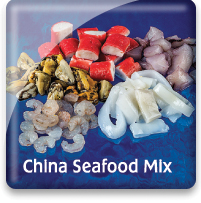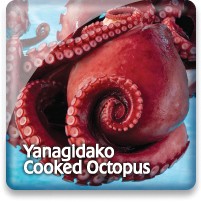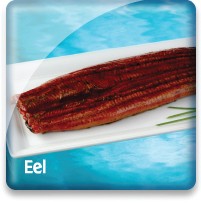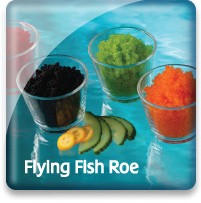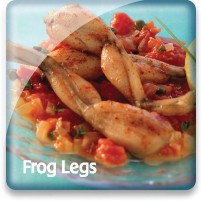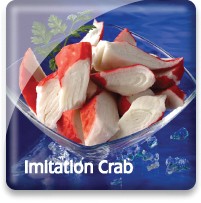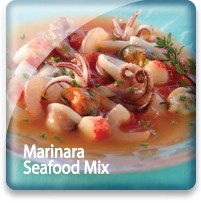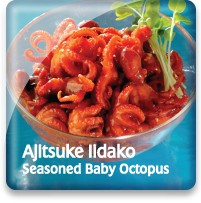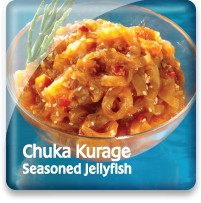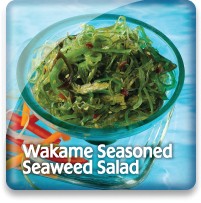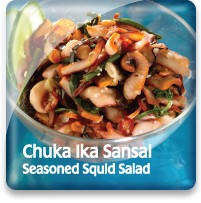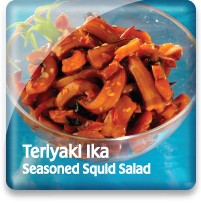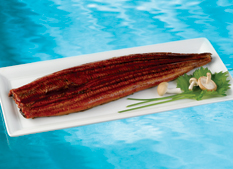
Eel

Market Name: Eating QualitiesThe snakelike fish is one of the most versatile and tasty. Eel contain no pinbones, so the boneless white meat is easily produced. Its white meat is flaky, rich, and somewhat sweet. Eel has rather high oil content and is best prepared grilled, smoked, sautéed, baked or stewed.
Freshwater eels are catadromous species, meaning they spend a majority of their lives in freshwater and return to the ocean to breed. However, the lifecycle of eels is not completely understood.
|
Description & CharacteristicsEel, Anguilla rostrata, is commonly referred to as freshwater eel or American eel. The American eel is very similar to the European eel, Anguilla anguilla. The Japanese eel, Anguilla japonicus, is also similar.Eels are snake-like in shape. This characteristic has prevented many people from sampling them. Like squid, this item may need a different name if it is to secure consumer acceptance. Eels are catadromous, meaning they spawn at sea and return to fresh water to grow, the opposite of salmon. American and European eels begin and end their life in the Sargasso Sea where adults migrate to spawn and die. Larvae are then carried by currents to coastal areas and they become transparent “glass eels.” As they migrate to brackish or freshwater areas, the young, small, now pigmented eels are known as “elvers.” Eels spend most of their life in the “yellow stage” and will live in the rivers and streams that they migrated to for many years. At this point eels are dark olive green to brown in color with yellow on their sides and a whitish belly. “Silver eels,” which are the same species returning to the sea to spawn and die, may be as large as 20 pounds.Very small eels (up to three inches long) are known as glass eels or elvers and are a delicacy in some Asian and European countries. Aquaculture now produces most of the world’s eel supply. Japan, Taiwan and China are all major producers of Japanese eel, selling mostly to the Japanese market—where eels are an important food. The Netherlands, Denmark, Italy, and a few other countries are aquaculture producers of the European eel. U.S. domestic markets are restricted to a few of the largest cities and to a number of shoreline areas where people appreciate the fine eating qualities. Italian communities, in particular, cook and eat eels at Christmas and this constitutes the major part of the domestic market for unprocessed eels.Much of the U.S. production is from Maine and the middle Atlantic states, especially Virginia and the Chesapeake Bay area, although eels can be caught along the whole of the Atlantic and Gulf coasts as well as in freshwater areas that have outlets to the ocean. Yellow or brown eels are the main catch. Eels are typically trapped commercially in an eel pot. They are usually between one and three pounds. Commercial catches of eel have been declining and data is now being collected to monitor and manage eel catches. Fresh eels are usually shipped live in tanks specially equipped with air pumps to keep the water full of oxygen during transit although they can live for several days out of water in a damp atmosphere. They are usually purged by being held in tanks without food for 24 hours.Frozen eels are available either whole, or headless and dressed. Eels that are frozen whole must be kept alive long enough to allow them to purge themselves of food before being killed and frozen. Whole eels are sometimes frozen live in bags. The animals intertwine, which makes them difficult to thaw and handle. A better alternative processing method involves stunning them and freezing them individually. This process makes them a better buy for smokers, who are major buyers of eels. Eel flesh is extremely palatable. The meat has a fairly high fat content, but is white and firm. They may be stewed, boiled, broiled, and fried—almost any method of preparation works well. Eels may be filleted, but, if they are cooked with the bone, the flesh is easy to remove and there are no small bones to complicate the operation. Eels must be skinned before use. Smoked eels are a considerable delicacy.
Eel is also used in sushi and is called unagi. Other Resources |
Handling Instructions for Eel
Our frozen cooked eel fillet (unagi) should be stored at or below 0°F (-18°C) and then thawed properly when ready to consume as a precooked product. It is best to consume frozen precooked eel within 18-24 months of the processed freeze date. Links to further information concerning the proper handling of cooked eel and other seafood: NOAA - Fish Watch: Handling Seafood and A Consumer Guide to Safe Seafood Handling.
Thawing Eel
Our cooked eel is frozen in vacuum packs. The FDA requires that you never thaw vacuum packed seafood in the refrigerator due to the fact that the anaerobic (airless) environment may allow for the growth of the bacterium Clostridium botulinum that could cause botulism food poisoning. They recommend that you remove the product from the vacuum packaging or break the vacuum seal and eliminate this risk and then proceed with thawing. Thawing is accomplished by placing the product in a plastic container or bag and placing in the refrigerator (33 to 39°F) for 12-24 hours. This method results in a high quality thawed cooked meat that retains its natural juices, flavor and texture. Eel meat that is not consumed promptly after thawing needs to be refrigerated between 33 and 39°F and totally consumed in 3-4 days.
Important Instructions for Eel
Consuming our cooked eel meat immediately after proper thawing yields the best quality.
The Federal Food, Drug and Cosmetic Act now requires that all foods that are not raw agricultural commodities and that contain a major food allergen be labeled to clearly identify the name of the food source form which the allergen is derived. (21 CFR U.S.C. 343(w)(1)). The act defines eight foods, and any ingredients derived from these foods as major food allergens: Fish, Crustacean Shellfish, Milk, Eggs, Tree Nuts, Peanuts, Wheat & Soybeans. The name of the food source that must be listed on the label for fish or crustacean shellfish must be the specific type of fish or crustacean shellfish. The market names of species of fish and crustacean shellfish should be used to identify the food source of these two major food allergens. If you intend to re-pack these seafood products, be sure the allergen is declared in either one of two ways:
1) Within the list of ingredients
or
2) In a separate “Contains” statement immediately after or adjacent to the list of ingredients.
Consult the Fish and Fishery Products Hazards and Controls Guidance, Fourth Edition, Chapter 19 for more detailed information on the labeling of food allergens.
Cooking Tips
Our cooked eel fillet is sushi grade and is quite delicious to eat without any further preparation. However, here are some Links to cooked eel recipes: Food Network and About.com.
China
With more than 1.3 billion people, China is today the world’s most populous country. With a growing economy fueling an appetite for seafood, China has begun importing seafood for in-country consumption, as well as exporting a great deal of its production. In fact, since 2002, China has continued to export more fish and fishery products than any other country in the world, with Japan, the United States, and the Republic of Korea as its main export markets.
Chinese distant water fishing activities started in 1985 when China gained access to new fishing grounds through agreements with foreign countries. China operates vessels in West Africa, the North Pacific, and tuna longline vessels in the South Pacific. In addition, squid are harvested in the Japan Sea and the North Pacific under Chinese-flagged vessels.
Carp are also commercially important, as are bream, shad, eel, cat fish, rainbow trout, salmon, whitebait, mullet, mandarin fish, perch, sturgeon, murrel and pangolin. Commercial shellfish include freshwater shrimp and river crabs, molluscs such as mussels, clams and freshwater snails.
With one-fifth of the world’s population, and an official government policy to promote aquaculture, China has today become an aquaculture powerhouse, now producing more than two-thirds of the world’s aquaculture species. Fish and shellfish are grown in freshwater as well as the marine environment, including rivers, estuaries, inland lakes, ponds, and the sea.
Taiwan
The island of Tawian, shaped like a tobacco leaf, nation, is located off the coast of China where it is officially part of the Republic of China. Some 23 million people live in an area that is just 245 miles long and 89.5 miles wide, making Taiwan the second-most densely populated country in the world.
While it offers few opportunities for recreational fishing, Taiwan’s commercial fishing industry is well-established, with a fleet of vessels that fish around the world for tuna, sharks, herring, reef fish, horse mackerel, sardines, squid and octopus. Aquaculture is also an important new industry in Tawian, with freshwater farms growing shrimp farms, and tilapia, and marine farms growing shellfish such as clams and oysters.
| We created the sustainability assessments for each of our seafood items in order to reveal the existing and potential environmental impacts and risks that are associated with producing them for human consumption. This allowed us to establish the starting position for each of our seafood items along our progressive Go Blue! Seafood Sustainability Spectrum®. These assessments are only a single snapshot in time and because of this, we will continue to assess and update the critical sustainability needs associated with our supply sources and issue updates to the Go Blue! Seafood Sustainability Spectrum® as needed. There is a growing global awareness for the need to assure the sustainability of farmed and wild caught seafood and because of this; all around the world positive changes are rapidly occurring at all levels of the seafood supply chain. We will continue to spread this growing awareness and work with our many industry partners to improve the sustainability of all seafood, which we believe is the ideal protein of choice to feed an ever growing world population. Our Go Blue! Seafood Sustainability Spectrum® serves as our compass and yardstick as we strive to move all our products forward to becoming more sustainable. Please join us in this committed quest and Catch Our Wave® to sustainability by choosing a diverse variety of responsibly produced seafood as part of your diet. |
Go Blue! Seafood Sustainability Spectrum*Click here for an explanation of our Sustainability Spectrum 
Sustainability AssessmentSea Port imports farm-raised Eels from Taiwan and China; China is the world’s largest producer of Farmed Eels. There are several environmental concerns with Eel farming. The foremost is that Eel farms depend entirely on the capture of wild juvenile Eels (commonly known as glass Eels) for seed, yet the wild Eel populations are in serious decline. Sourcing juvenile Eels from wild Eel populations will continue to put pressure on these already severely stressed stocks. Methods to breed Eels in captivity for commercial production have not been fully developed.
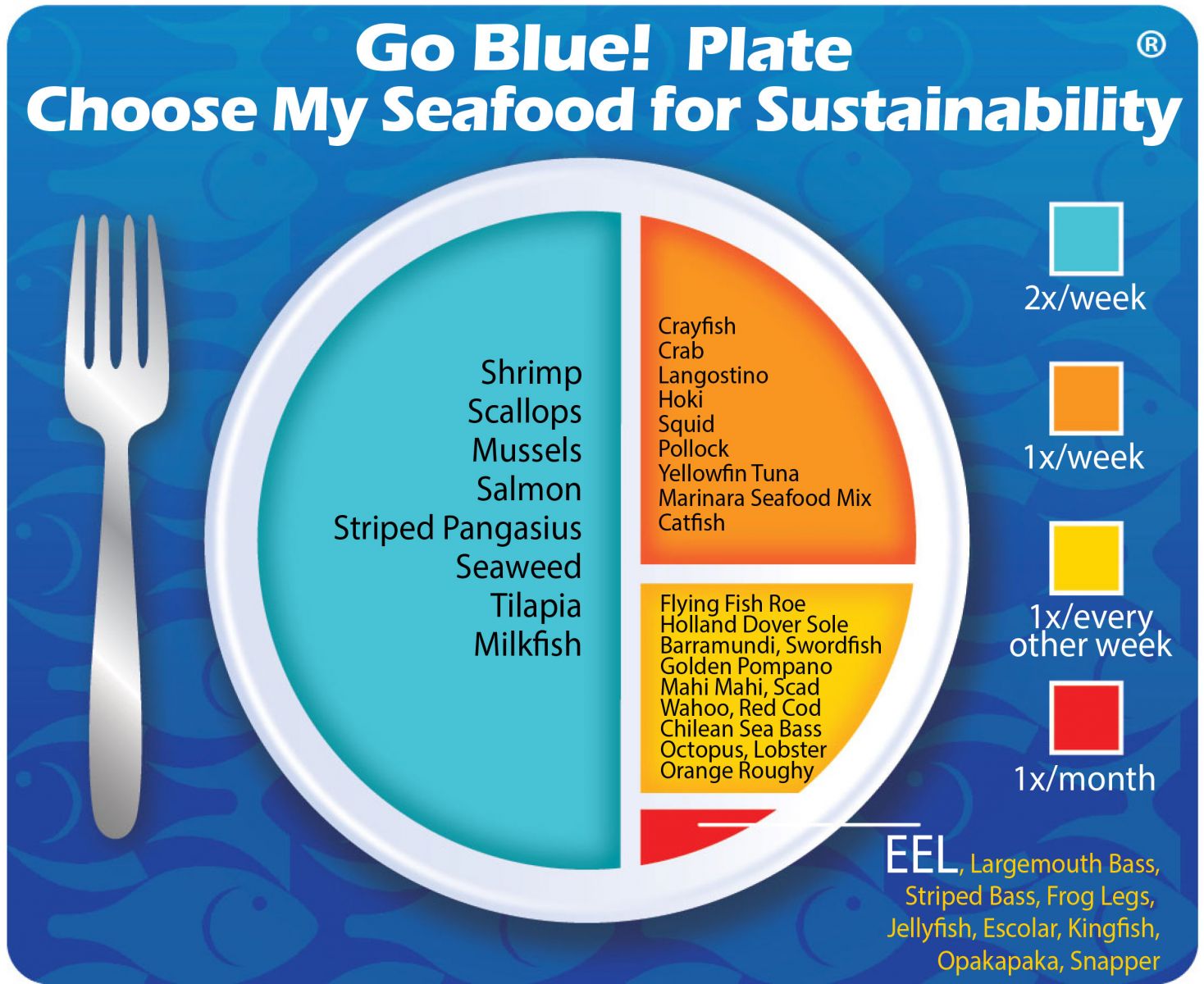
Environmental Impact: HighFarmed Eel production depends on capturing juveniles of severely depleted wild Eel populations. Use of groundwater, water pollution from farm waste, high levels of fishmeal in feed, and antibiotics and other chemicals are also cause for concern.
Sustainability Improvements NeededDeveloping commercially viable methods to produce hatchery-raised juvenile Eels would reduce pressure on wild Eel populations. Best management practices or other measures should be implemented to reduce or eliminate water pollution, and to decrease the use of groundwater, wild fish as a feed ingredient, and antibiotics and other chemicals.
Actions that Sea Port is UndertakingAll aspects of aquaculture science and technology are rapidly advancing and Sea Port foresees that in the future the farming of Eel will become more sustainable. The successful hatching and rearing of Eel is the most critically needed aquaculture development. Such a technological farming advancement would help assure the protection of wild Eel populations that are under pressure from overfishing and freshwater habitat destruction. Sea Port believes that the occasional consumption of Eel is appropriate as the Farmed Eel aquaculture industry works towards becoming more responsible and sustainable.
We created the sustainability assessments for each of our seafood items in order to reveal the existing and potential environmental impacts and risks that are associated with producing them for human consumption. This allowed us to establish the starting position for each of our seafood items along our progressive Go Blue! Seafood Sustainability Spectrum®. These assessments are only a single snapshot in time and because of this, we will continue to assess and update the critical sustainability needs associated with our supply sources and issue updates to the Go Blue! Seafood Sustainability Spectrum® as needed. There is a growing global awareness for the need to assure the sustainability of farmed and wild caught seafood and because of this; all around the world positive changes are rapidly occurring at all levels of the seafood supply chain. We will continue to spread this growing awareness and work with our many industry partners to improve the sustainability of all seafood, which we believe is the ideal protein of choice to feed an ever growing world population. Our Go Blue! Seafood Sustainability Spectrum® serves as our compass and yardstick as we strive to move all our products forward to becoming more sustainable. Please join us in this committed quest and Catch Our Wave® to sustainability by choosing a diverse variety of responsibly produced seafood as part of your diet.
|


